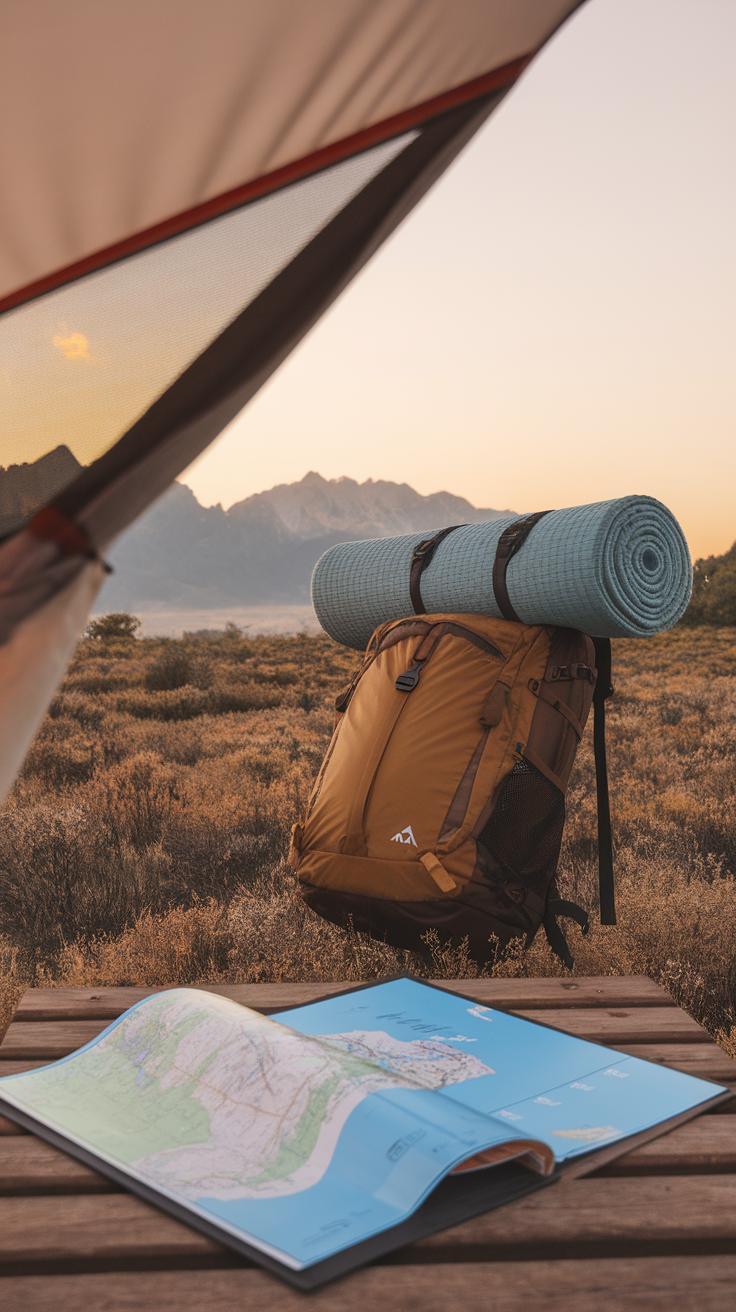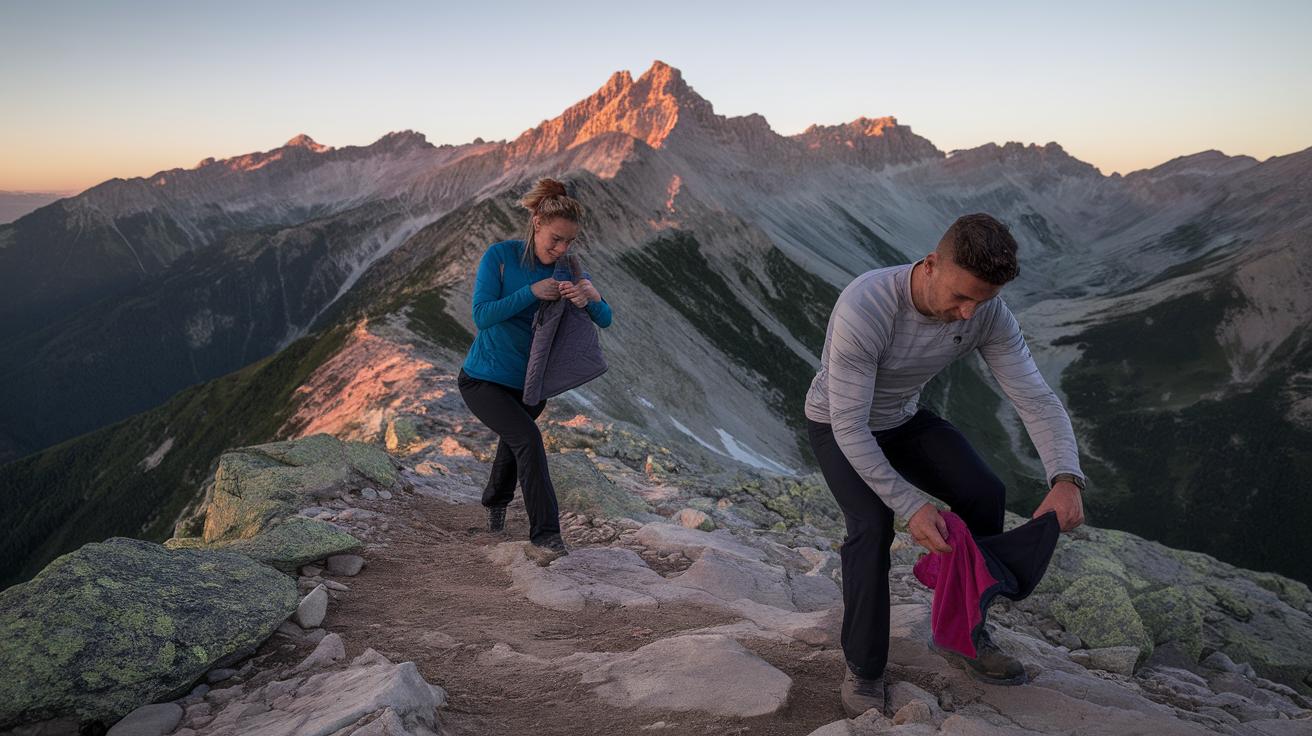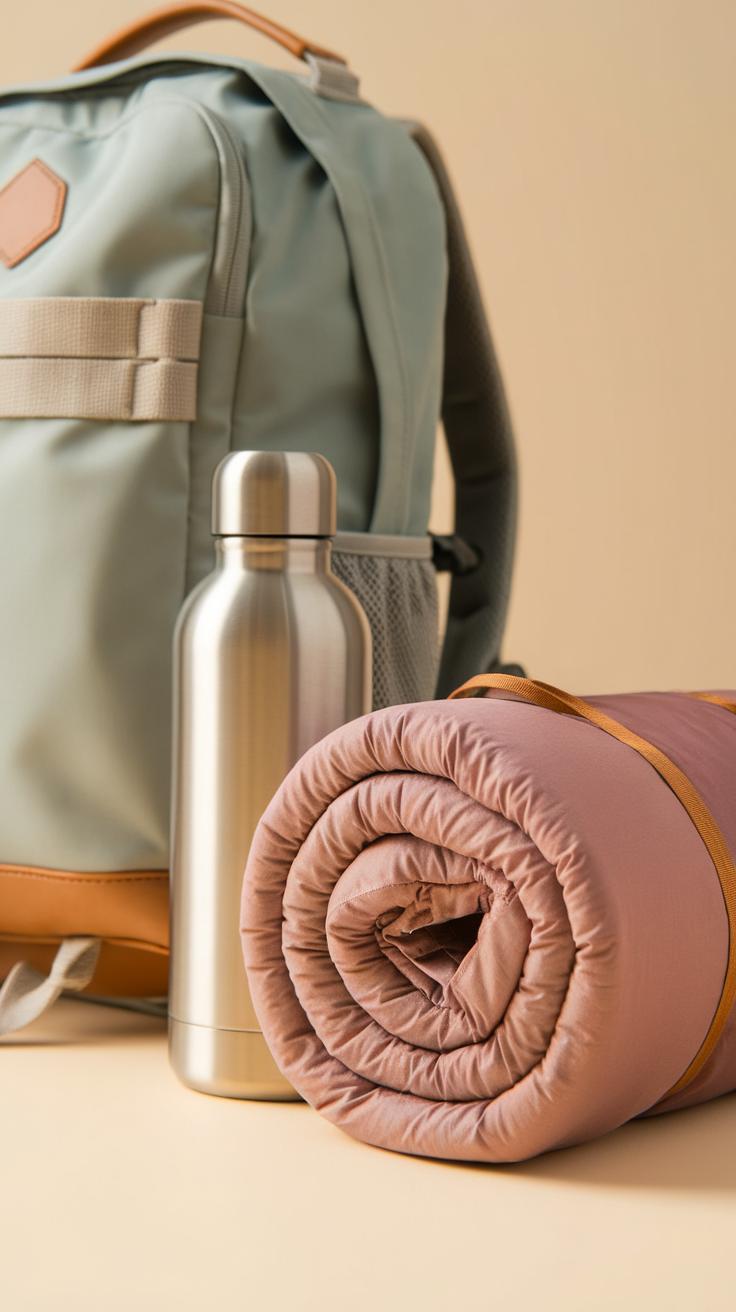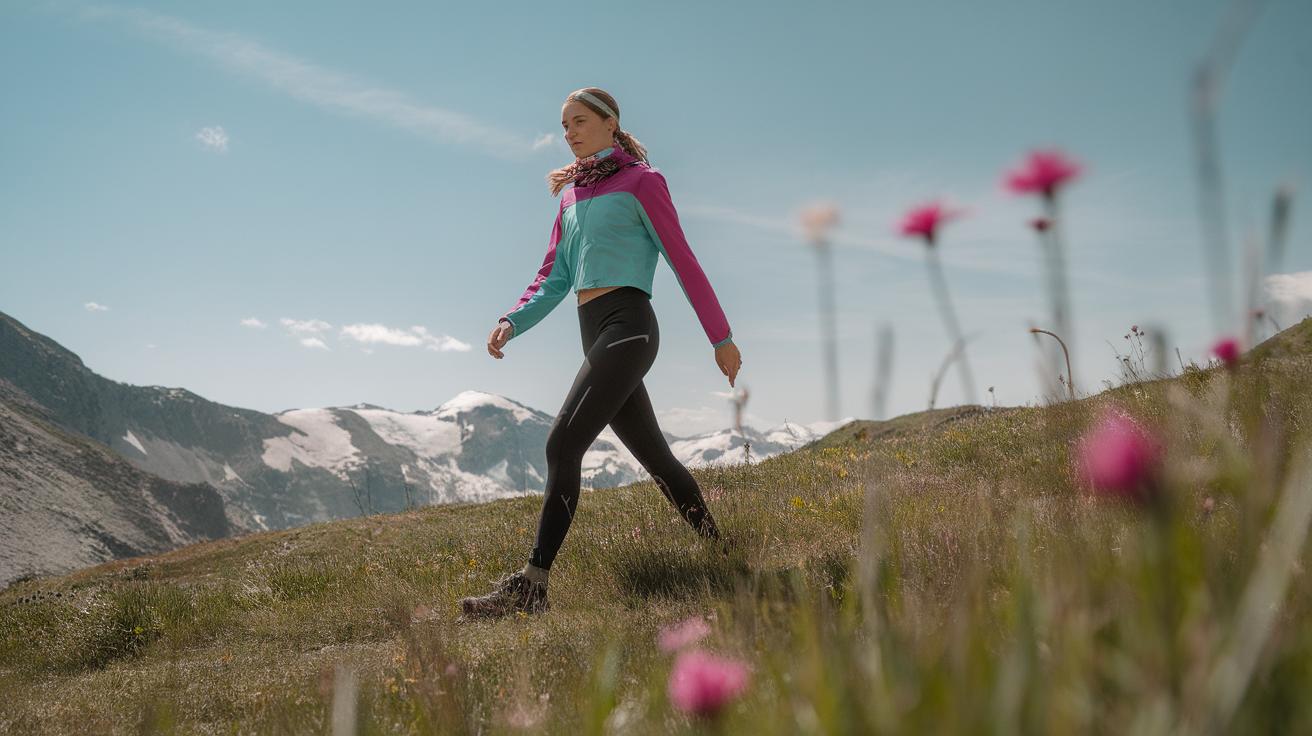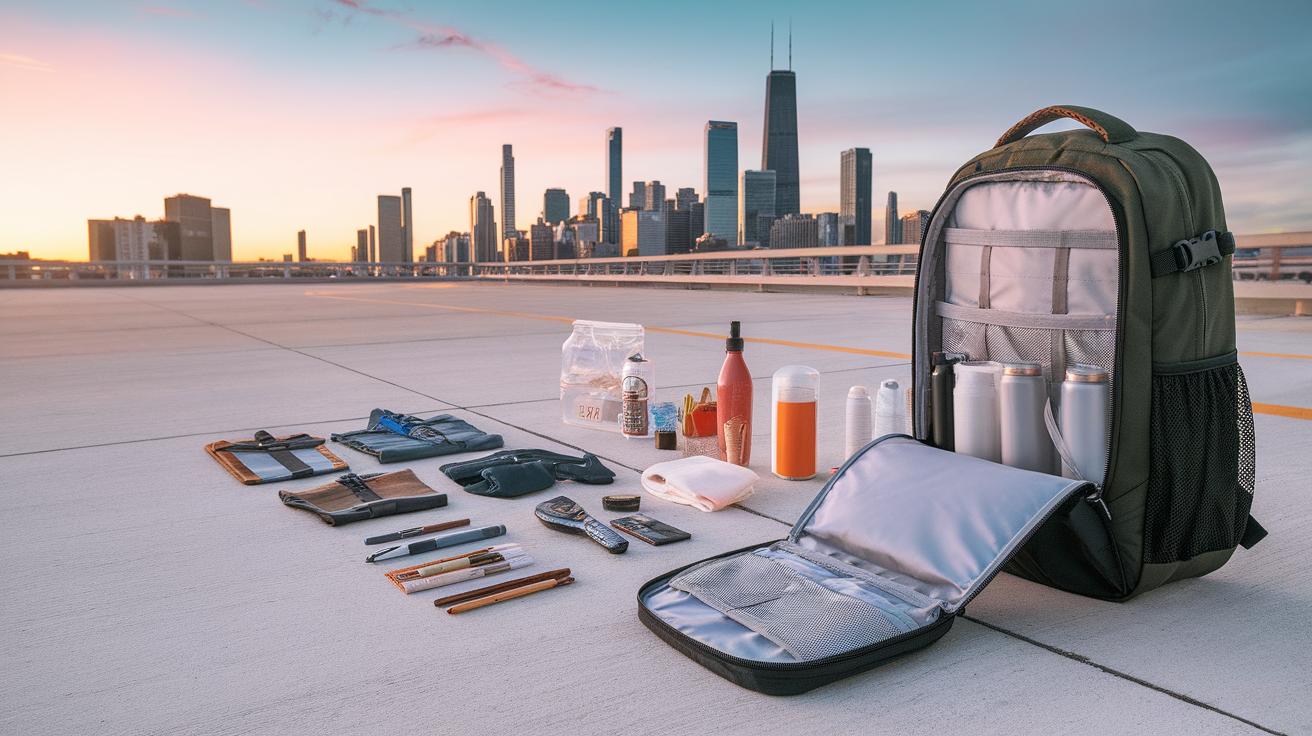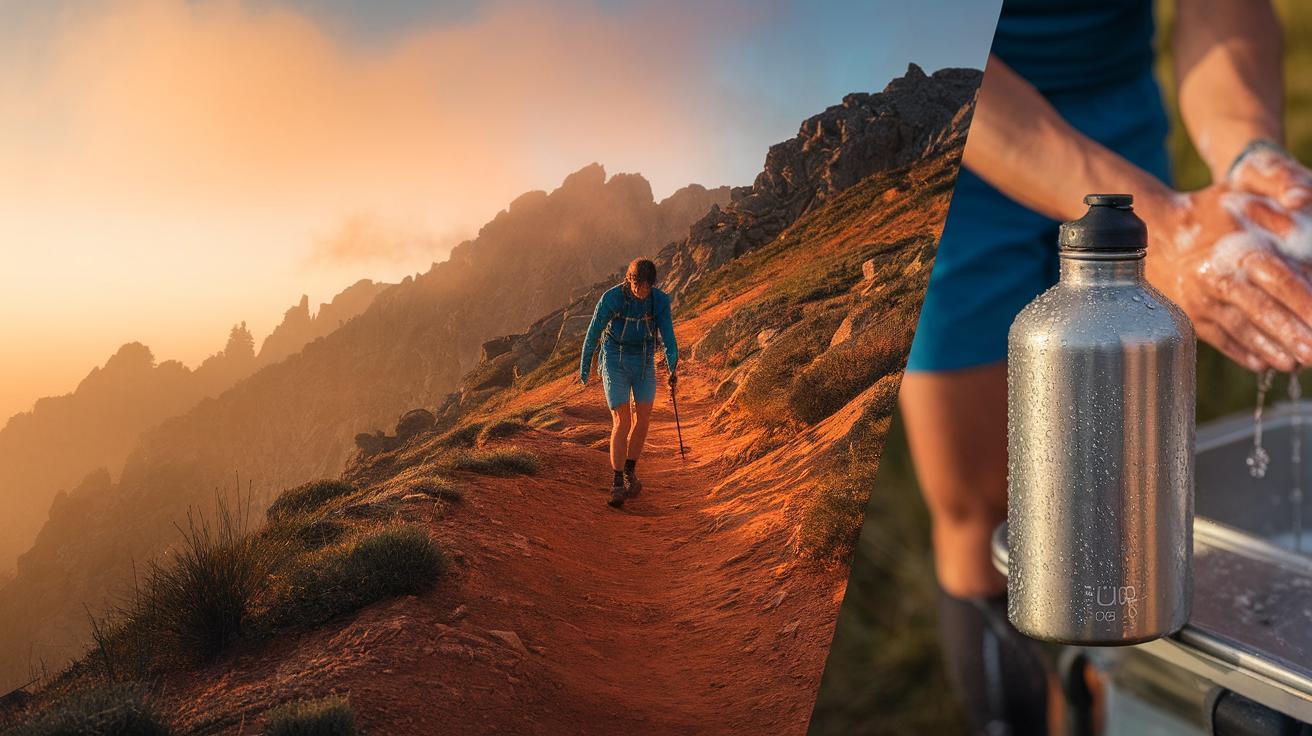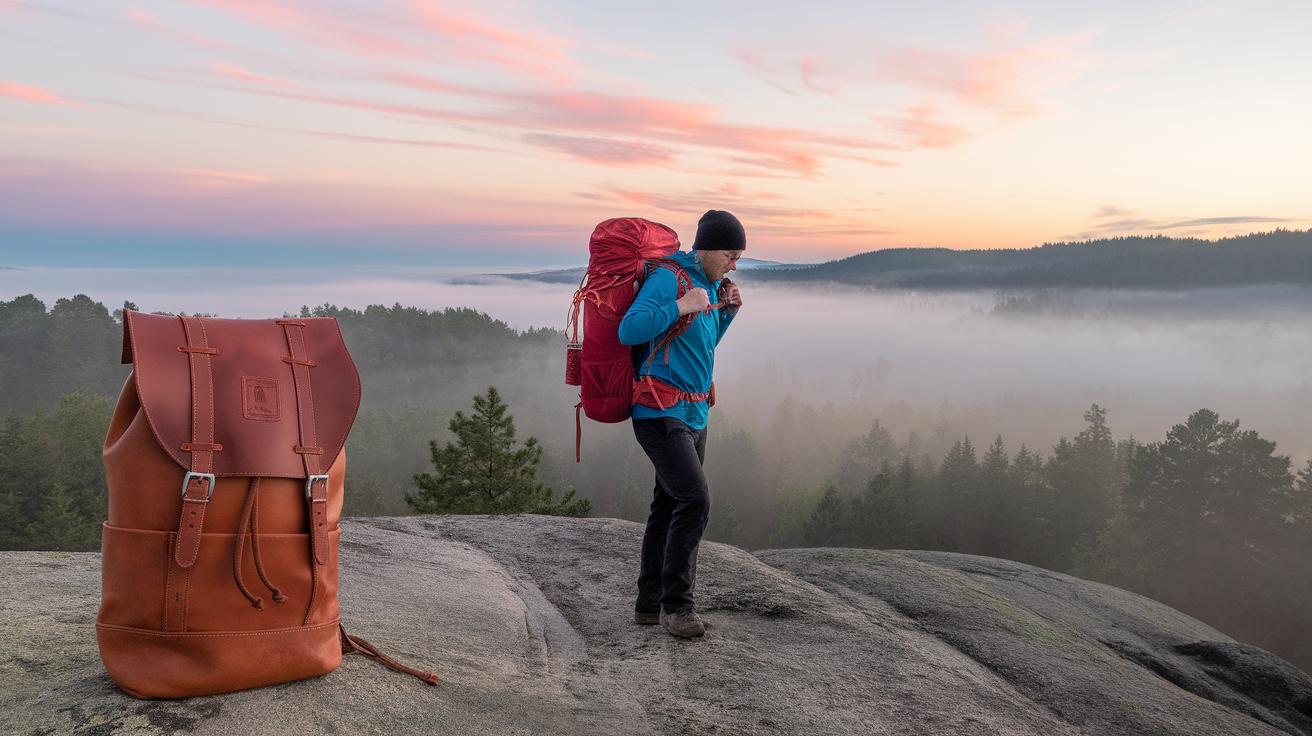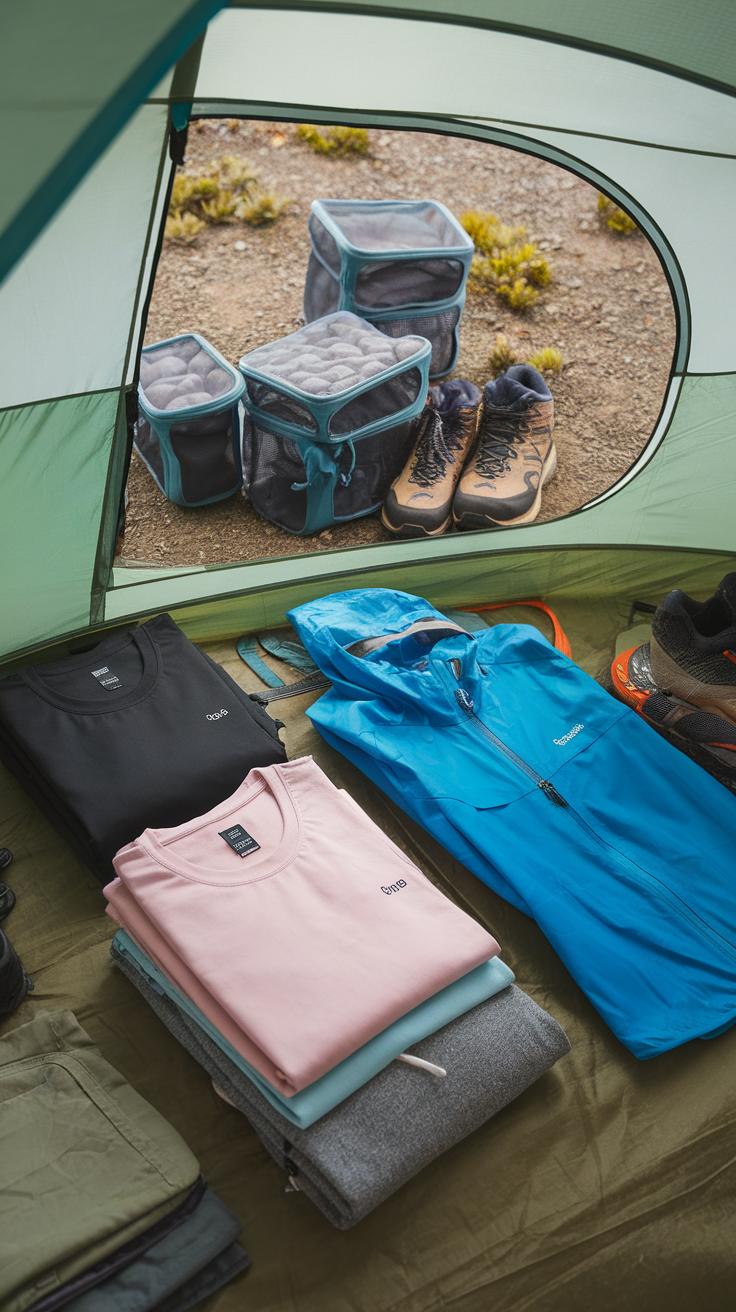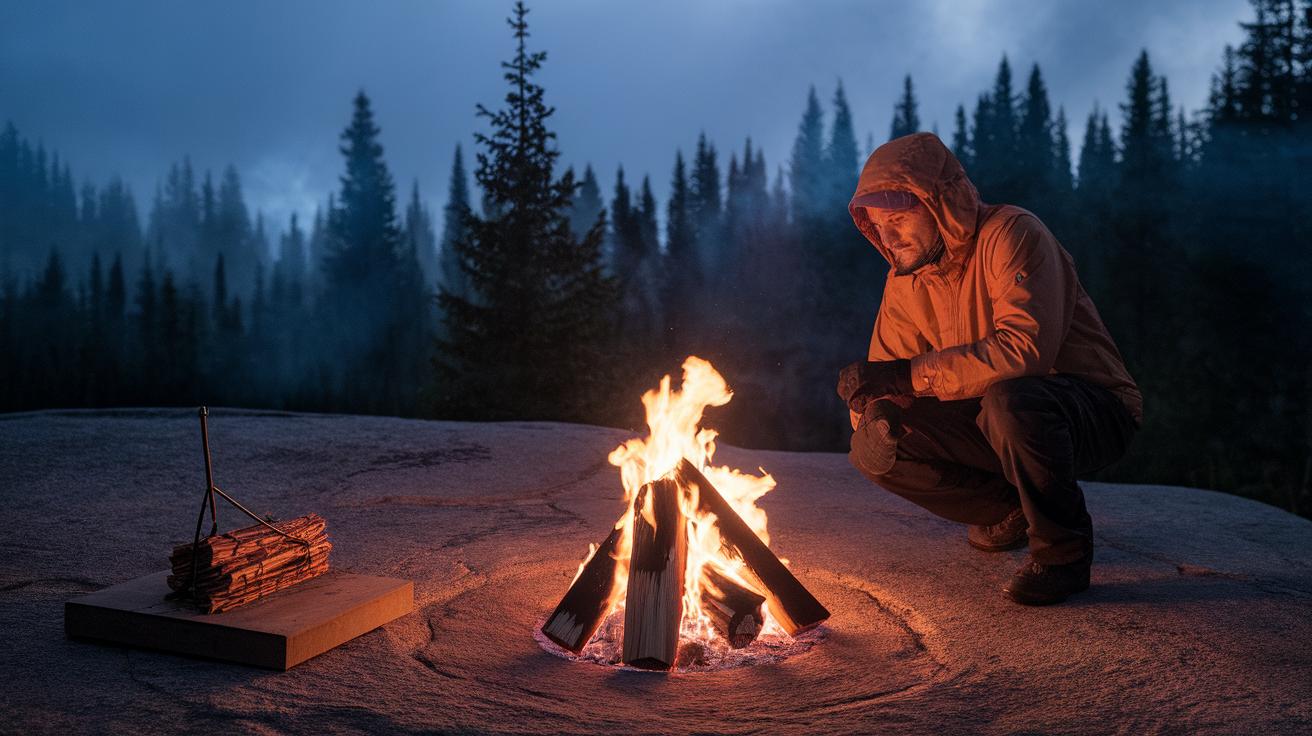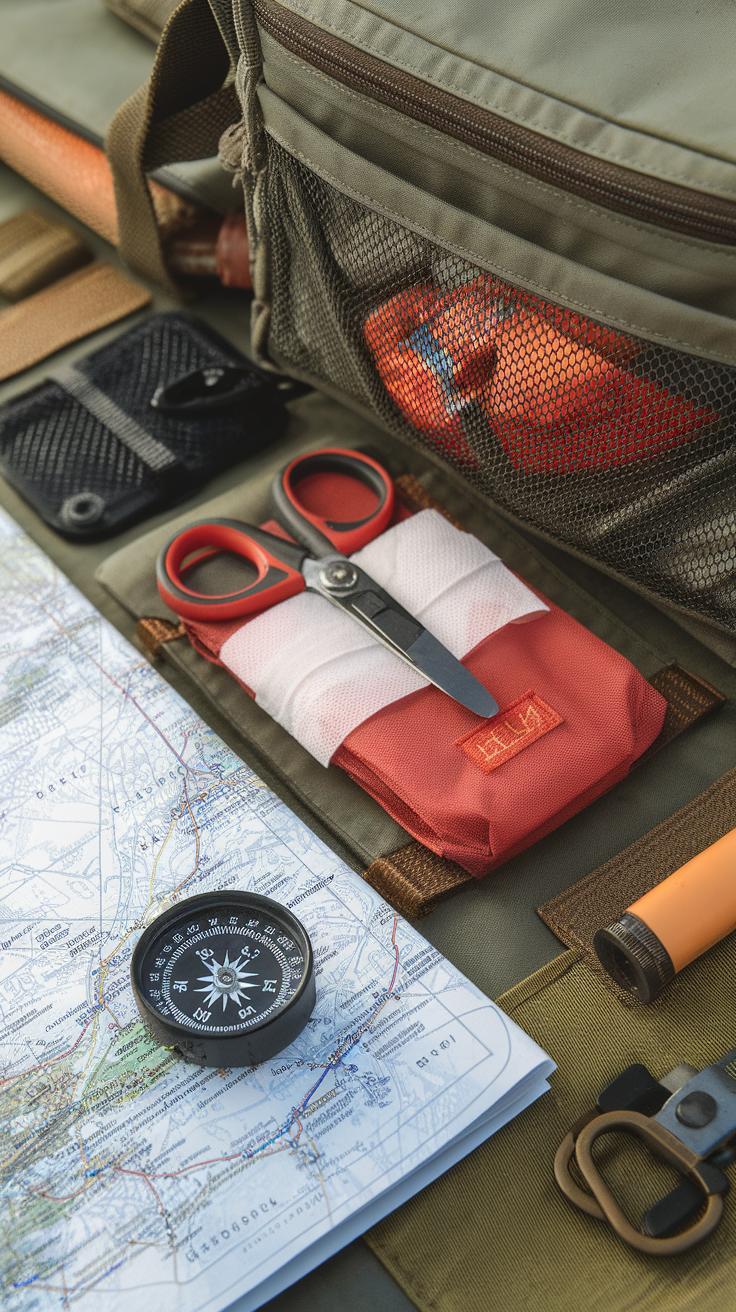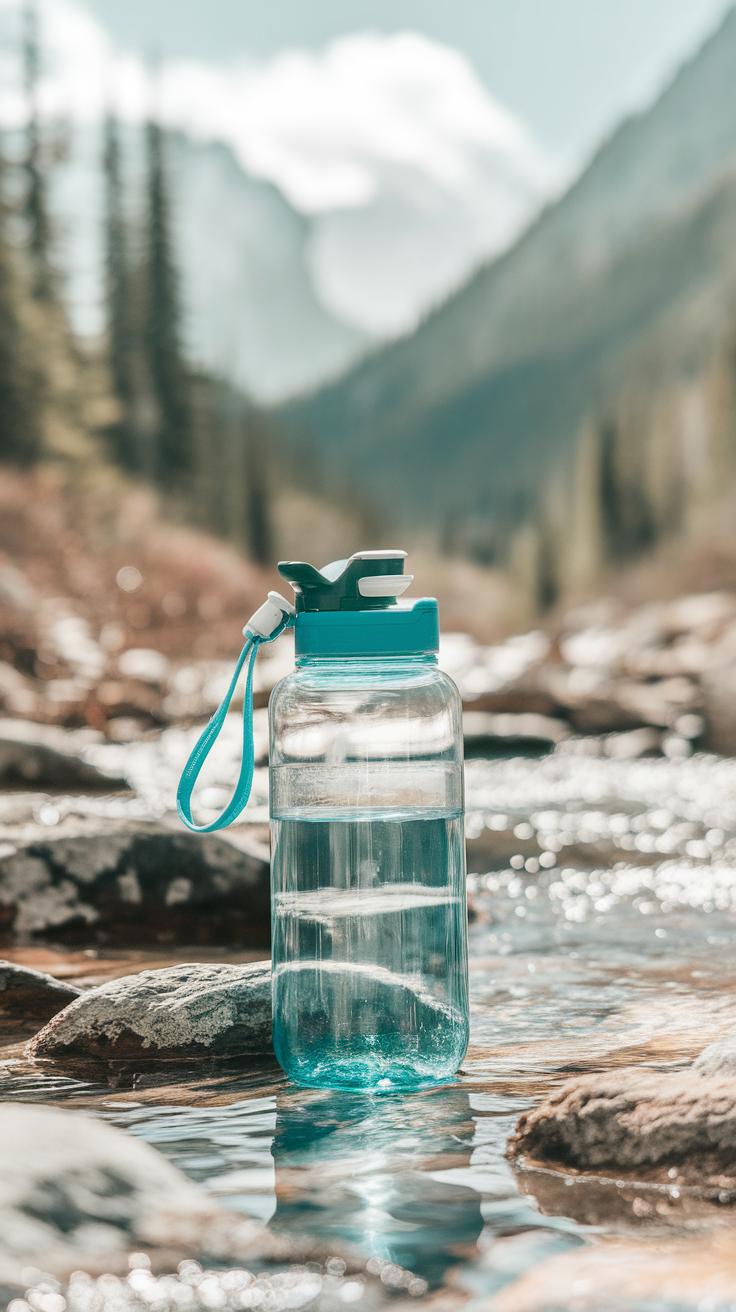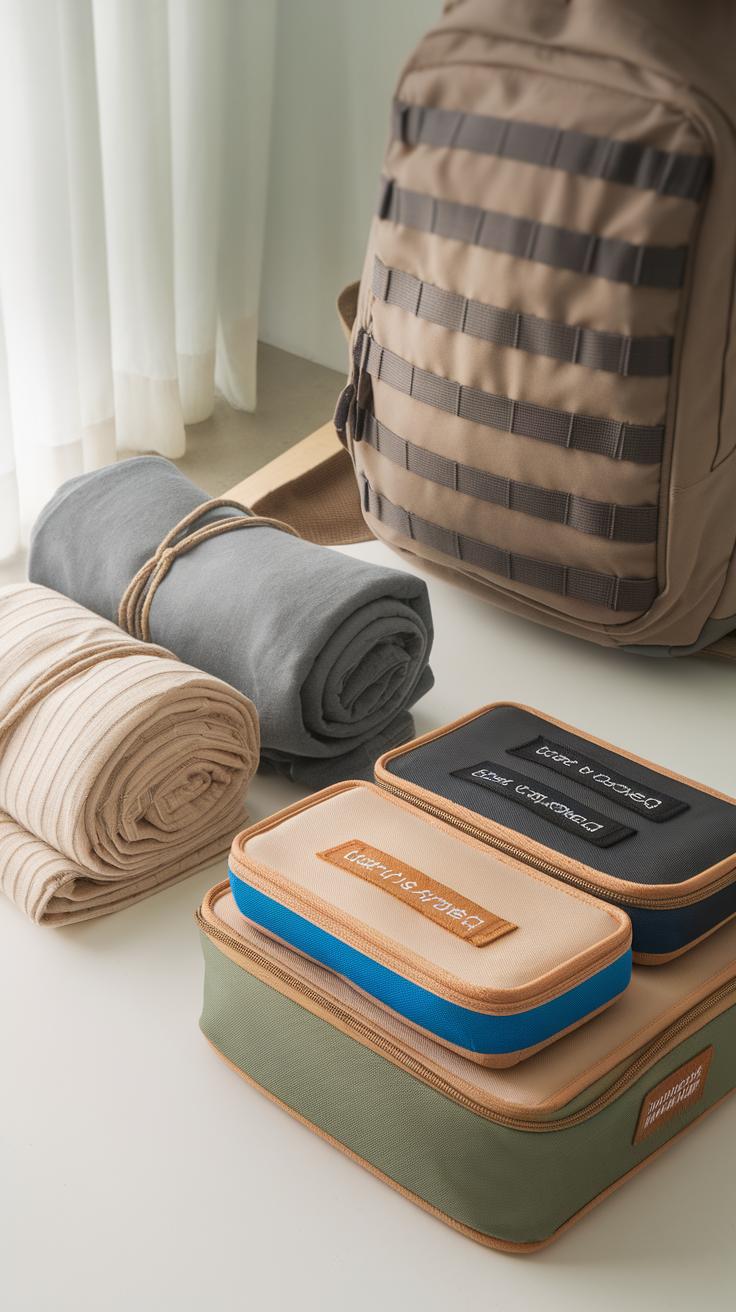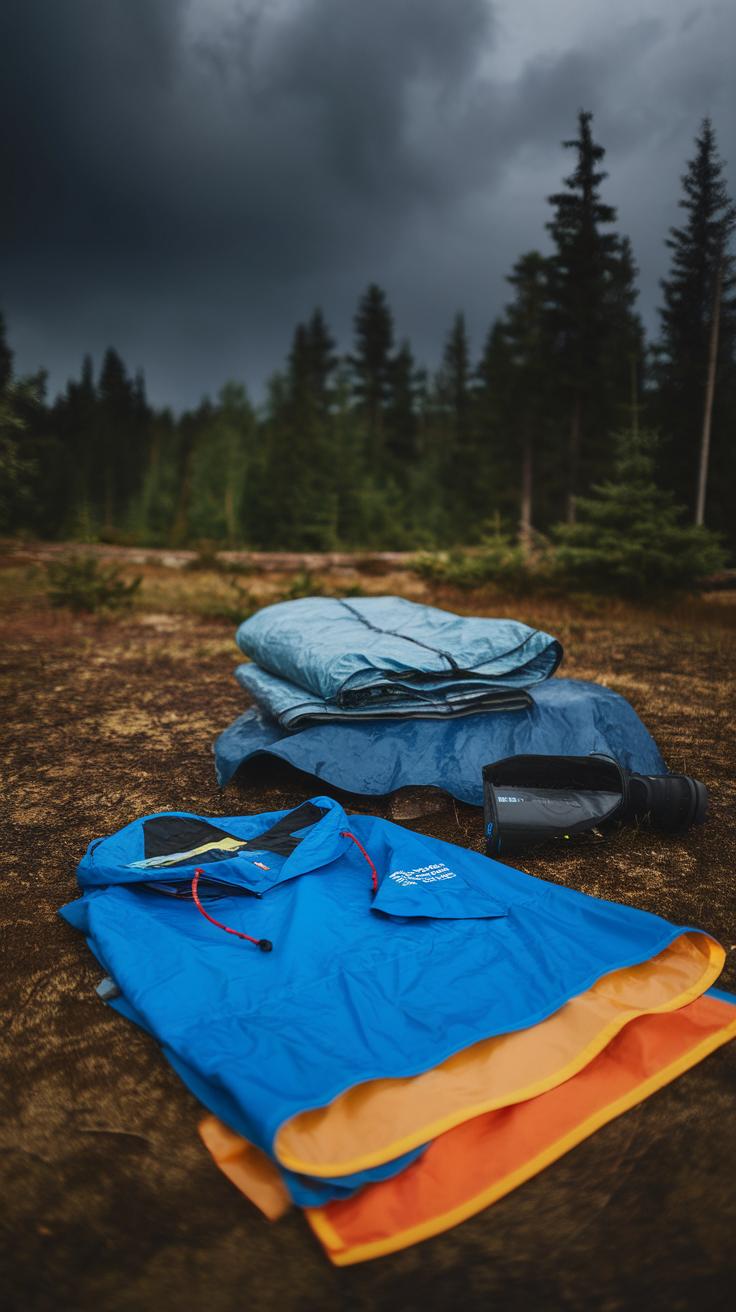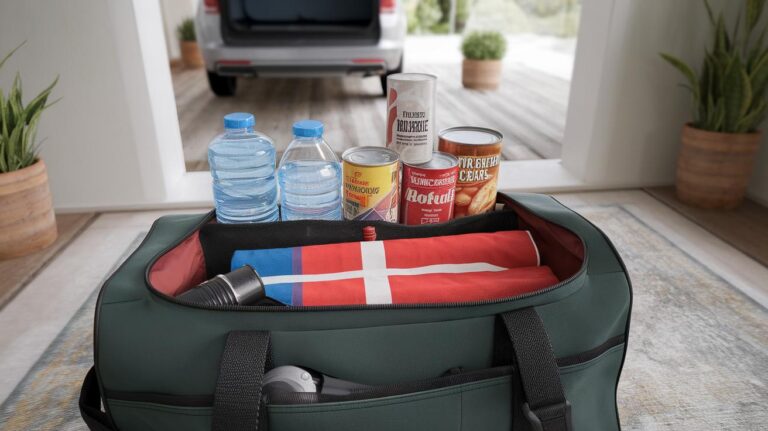Introduction
Camping offers a chance to enjoy nature, unwind, and connect with the outdoors. Proper preparation plays a key role in making your trip comfortable and stress-free. Having the right items packed can help you avoid common pitfalls and let you focus on the fun and relaxation that camping provides. This checklist will guide you through all the necessary gear and supplies you need to bring along, whether you are an experienced camper or trying your first outdoor adventure.
You might wonder what essentials make the difference between a smooth outing and a hassle-filled one. What items will keep you warm, hydrated, and safe throughout your trip? How can you ensure you are ready for unexpected situations? This article breaks down everything into clear and simple sections. By following this checklist, you can leave your worries behind and enjoy a rewarding camping experience.
Planning Your Camping Trip
When planning your camping trip, start by choosing a location that fits your needs and experience. Think about how far you want to travel and what kind of environment you want to be in. Are you looking for a forest, a beach, or a mountain setting? This will affect the gear you need and the activities you can enjoy.
Consider how long you plan to stay. A short weekend trip calls for less gear than a week-long adventure. Also, check the weather forecast for your dates. Prepare for rain or shine by packing clothing and equipment that match the conditions.
Decide on the type of camping you want: tent, RV, or cabin. Each option requires different preparations. For example, an RV needs hookups and space, while tent camping demands a flat, dry area and extra shelter.
Research the campsite ahead of time. Look up reviews, maps, and official information. Knowing what to expect makes it easier to pack correctly and avoid surprises. Ask yourself, what activities are available? What rules do you need to follow? This helps ensure a smooth experience outside.
Choosing Your Campsite
When choosing your campsite, start with accessibility. How easy is it to reach? Some campsites are close to roads, making them good for beginners or families. Others require hiking in, perfect for those who want solitude and exercise.
Check what amenities the site offers. Does it have toilets, running water, or fire pits? Some campsites provide picnic tables and trash bins, while others are more basic. Match these with your comfort needs and camping style.
Safety matters. Look for campsites free of hazards like steep cliffs or unstable ground. Check local wildlife presence and find out if the area has any restrictions or warnings.
Think about the surroundings. Do you want a view of a lake or river? Or do you prefer being surrounded by trees and wildlife? Different campsites appeal to different preferences and can change your whole camping experience.
Setting Your Trip Duration and Timing
Choosing how long to camp depends on your schedule and goals. A weekend trip may be enough to relax and explore near your site. Longer stays allow deeper connection to nature but require more planning and supplies.
Pick the best time by studying local weather patterns. Avoid seasons with extreme heat, heavy rain, or snow unless you are prepared for those challenges. Check when the campsite gets crowded. Going during off-peak times can mean more privacy and less noise.
Plan your days with a mix of activities and rest. Balance hiking or fishing with downtime around the campfire or reading a book. How much activity can you handle before needing a break? This helps you avoid fatigue and enjoy the trip fully.
Essential Camping Gear
Your camping experience depends on the gear you bring. This gear keeps you safe, comfortable, and prepared for the outdoors. The first thing to pack is a reliable tent. A good tent protects you from rain, wind, and bugs. Make sure it suits the season and the number of people in your group.
Sleeping bags are next. They keep you warm during chilly nights. Pick one with the right temperature rating for the weather. To improve comfort, add a sleeping pad underneath you. It cushions the ground and insulates you from cold soil.
Don’t forget a camp chair. Having a spot to sit after a long day makes a big difference. Lastly, pack lights like headlamps or lanterns to keep the campsite bright when it gets dark. Good lighting helps avoid accidents and makes night activities easier.
Ask yourself: Will your gear protect you if the weather suddenly turns cold or wet? Choosing the right equipment answers that question and ensures your trip runs smoothly.
Shelter and Sleeping Equipment
Tents come in various shapes and sizes. Consider the number of campers and the weather conditions when choosing one. For example, dome tents offer good wind resistance, while cabin tents provide more space and standing room. If you expect rain, pick a tent with a waterproof rainfly and sealed seams.
Sleeping bags have temperature ratings that indicate the lowest temperature for comfortable sleeping. Plan your choice based on the average nighttime temperature at your camping spot. For colder nights, a bag rated lower than the expected temperature keeps you warm.
Sleeping pads add a layer of insulation and cushion between you and the ground. Closed-cell foam pads are lightweight and durable, while inflatable pads offer more comfort but need careful handling. Decide which works best for your style and pack weight limits.
Consider how much space and weight your shelter and sleeping gear will take. Will you carry everything yourself, or is your transportation more flexible? These choices affect how enjoyable and safe your nights will be outdoors.
Camp Lighting and Seating
Camp lighting keeps your site safe and functional after dark. Headlamps free your hands for tasks like cooking or setting up a tent. Lanterns provide broad light for group activities around the campsite. Flashlights work well for quick trips or emergency use.
Always bring spare batteries or a portable charger. Running out of power in the middle of the night can disrupt your plans and cause avoidable stress.
Portable seating options include foldable chairs or stools. They make relaxing, eating, and socializing easier. Choose seats that strike a balance between comfort, weight, and pack size.
Ask yourself: Would you prefer a chair with armrests and cup holders, or something more compact? Your answer helps pick the right seating and lighting gear. Comfortable and well-lit campsites make every moment outdoors more enjoyable and safe.
Cooking and Food Supplies
When you plan your camping meals, focus on foods that save time and avoid spoilage. Packing non-perishable items like dry grains, canned beans, nuts, and dried fruits cuts down on weight and fuss. Choose easy-to-cook meals that you can prepare quickly on a camp stove or over a fire.
Think about meals in layers: start with breakfast, then plan simple lunches and warm dinners. For example, instant oatmeal for breakfast, peanut butter sandwiches for lunch, and pasta with canned sauce for dinner. This approach reduces cooking stress and leftovers.
Bring versatile cooking tools to handle different recipes. A single pot can cook rice, soup, or boil water for coffee. Combining smart food choices with the right gear keeps your cooking organized and your camping trip smooth. How much time do you want to spend on meal prep when you could be enjoying the outdoors?
Food Selection and Storage
Pick lightweight and shelf-stable foods to ease your pack load. Instant noodles, freeze-dried meals, granola bars, and jerky last long without refrigeration. These items also reduce the need for complicated cooking setups.
Organize your food in sealed containers or airtight bags to prevent spills and keep insects away. A sturdy cooler works well for perishable items if you plan a short trip with available ice. For longer trips, avoid fresh ingredients that spoil easily.
Safe food storage helps prevent wildlife like raccoons or bears from getting into your supplies. Use bear-proof containers or hang food bags from trees according to your campsite rules. What’s the best way to protect your food and keep critters away at your camping spot?
Cooking Equipment and Utensils
Essential gear includes a portable stove, one or two pots, and a pan. These cover most cooking needs like boiling water, frying, or making soups. Pack basic utensils: a spatula, spoon, and knife. Don’t forget reusable plates, cups, and cutlery.
Bring supplies to clean up: biodegradable soap, a scrubber, and a small towel. Keeping kitchen gear clean helps prevent attracting animals.
A chuck box or dedicated container keeps all cooking items in one place. This setup saves time and reduces mess while camping. Would you prefer digging through bags or grabbing everything from one organized box when hunger strikes?
Clothing and Personal Items
Packing the right clothing helps you stay comfortable throughout your camping trip. Plan your clothing based on the weather you expect. Bring layers that can be added or removed easily. Layering lets you adjust to temperature changes from morning to night without carrying bulky items.
Include a base layer to wick sweat, a middle layer for insulation, and an outer shell for wind or rain protection. Choose materials like wool or synthetic fibers that dry quickly. Avoid cotton since it holds moisture and chills your body. Bring a hat and sunglasses to protect against sun exposure. Don’t forget gloves and a warm jacket if you camp in cooler areas.
Personal items keep you healthy away from home. Pack a toothbrush, toothpaste, travel-sized soap, and deodorant. Sunscreen with a high SPF helps prevent sunburn. Apply insect repellent to avoid bites, especially in wooded or wet areas. Carry basic first aid supplies like bandages, antiseptic wipes, and any medications you use daily.
How do you plan for sudden weather changes? Keeping personal hygiene in check can prevent illnesses when you’re far from usual facilities. What personal items make you feel more comfortable outdoors? Tailor your packing list to fit your needs and environment for a smooth camping experience.
Clothing for Various Weather
Your clothing choice must shield you from sun, cold, rain, and insects. Start with a moisture-wicking base layer to keep sweat off your skin. Add fleece or wool layers for warmth when temperatures drop. Always bring a waterproof jacket or poncho for rain. Even on sunny days, weather can shift quickly.
Use a layering strategy that lets you add or remove clothing easily. For example, a thermal shirt under a fleece and a rain jacket works well. Insect-proof clothing or long sleeves and pants help keep bugs away. Light colors reduce heat absorption and make spotting ticks easier.
Think about the time of year and location. Will you face chilly nights? Will afternoon storms roll in? Preparing for various weather means less stress and a better trip. What layering combos have worked best for you in the past? Packing smart clothes means you are ready for whatever the outdoors throws at you.
Personal Hygiene and Health Essentials
Maintaining hygiene is key to avoiding sickness on the trail. Bring a travel toothbrush and a small toothpaste tube. Include biodegradable soap to wash hands and face without harming the environment. A quick-dry towel saves space and helps you stay clean.
Sun protection requires more than clothing. Pack sunscreen rated at least SPF 30 and reapply often. Insect repellent with DEET or natural alternatives stops pests that spread diseases. Also consider lip balm with SPF to protect lips from chapping.
Prepare a small first aid kit with bandages, antiseptics, pain relievers, and any personal medications. Keep items organized in a waterproof bag. Being ready for minor injuries means less worry during your adventure. What items do you never leave home without to maintain your health outdoors?
Safety and Navigation Tools
Carrying safety and navigation tools keeps your camping trip secure and organized. When you step into unfamiliar terrain, these items help you avoid getting lost and prepare you for unexpected situations. Maps and compasses work without batteries or signal, making them reliable even if technology fails. Imagine being deep in the woods without a clear path—maps and compasses guide you back to safety.
A first aid kit handles minor injuries before they become serious. Scrapes, burns, or insect bites can happen anytime, so having bandages, antiseptics, and pain relief close at hand makes a difference. Emergency fire starters serve more than warming up your campfire; they provide a way to signal for help or stay warm if temperatures drop suddenly. What would you do if your phone died or you lost cell service? Having these essentials ensures you stay prepared for such moments.
Navigation and Communication Devices
Maps help you understand the terrain and plan your route effectively. Combine them with a compass to find your exact direction. GPS devices offer precise location data, but they rely on batteries or satellite signals, which may not always be available. Do you have extra batteries or a power bank ready?
Communication devices like satellite messengers or two-way radios help you send distress signals or contact your group when cell phones fail. Choosing reliable communication gear can save lives in case of emergencies far from help. Carrying more than one navigation or communication tool creates backups. How confident are you in your gear if technology fails?
Emergency and First Aid Supplies
An effective first aid kit includes adhesive bandages, sterile gauze, antiseptic wipes, allergy medication, and pain relievers. Add tweezers for splinters and scissors for removing tape or clothing. A whistle is a simple device that broadcasts your location by sound. It’s lightweight but highly effective for alerting rescuers.
Multitools combine scissors, knives, and screwdrivers to handle many campsite tasks or emergencies quickly. Emergency fire starters like waterproof matches, lighters, or magnesium sticks help you build a fire even in wet conditions. Think about your last hike—did you wish you had any of these tools handy? Packing these essentials can change how smoothly you handle unexpected challenges on your camping trip.
Water and Hydration
Water plays a key role during any camping trip. You need enough water to stay hydrated, cook meals, and clean basic items. Dehydration can quickly spoil your adventure and affect your health, so planning your water supply carefully is vital.
Start by checking if your campsite provides water sources. If it does, you still must assume that natural water needs purification before drinking. Holding a reliable method to clean water prevents illness caused by bacteria or parasites found in rivers and lakes.
Carrying all your water might weigh you down, especially on longer trips. Using portable water filters or purification tablets lets you refill safely from streams or lakes. Boiling water requires a heat source but offers a simple way to kill harmful organisms when other tools aren’t available.
Think about your daily routines. Are you hiking, cooking, or resting most of the day? This affects how much water you’ll need. Planning well ahead means fewer interruptions and a better outdoor experience.
Estimating Water Needs
Estimate the amount of water you need by considering the number of days you’ll camp. Plan for at least one gallon per person each day. This covers drinking, cooking, and basic hygiene.
Hot weather or intense physical activity demands more water. For example, if you’re hiking in dry desert conditions, you might need up to two gallons daily. Cool and shady spots reduce water needs, but never skip bringing enough.
Think about your planned activities. More exercise means more sweating and faster dehydration. If your trip includes strenuous hikes or long walking days, increase your supply accordingly.
Adjust your estimate if you expect to find water nearby, but factor in purification time. Bringing extra water is safer than running short. Have you ever run out of water while camping? Prevent that experience by planning smartly.
Purification Techniques
Choose the right water purification method based on your situation and water source. Portable filters work well for clear streams; they remove dirt and most bacteria quickly. Carry a few spare filter cartridges if your trip is long.
Tablets or drops are lightweight and easy to pack. They are effective against bacteria and viruses but may require waiting 30 minutes to an hour before water is safe to drink. They don’t remove sediments, so pre-filter cloudy water.
Boiling water kills all harmful organisms. It works even in murky water but needs a stove or fire. Boil for at least one minute at lower altitudes; longer at high elevations. This method doesn’t remove chemicals or sediment.
UV purifiers use light to destroy pathogens but need batteries and clear water for best results. Consider carrying multiple options. What purification method fits your camping style and location best?
Packing Tips and Organization
Packing efficiently saves space and reduces the load you carry to your campsite. Sort your gear by size and frequency of use. Place bulky items like tents and sleeping bags at the bottom of your pack and lighter, often-used gear on top.
Consider using packing cubes to separate clothing into categories such as tops, bottoms, and socks. They keep your pack neat and make it easier to find what you need without emptying everything. Compression bags work well for bulky items; they squeeze out air and shrink your gear’s volume.
Think about weight balance. Distribute heavier gear close to your back and center to keep your pack stable. Test your load before hitting the trail to avoid back strain.
Efficient Packing Strategies
Begin by laying out all your items to visualize what you need. Roll clothes tightly instead of folding; this saves space and prevents wrinkles. Use small stuff sacks for grouping items like toiletries or electronics cords to avoid losing them.
Packing cubes allow you to stack clothing sets and access them without dumping your bag. Compression bags are perfect for large, soft gear such as jackets or sleeping bags; they shrink by up to 50 percent in size.
Distribute weight evenly by placing heavier items near your spine and closer to your torso. This helps maintain balance and reduces fatigue when hiking. Ask yourself: are there items I can leave behind or double-purpose to cut weight?
Organizing Your Gear at the Campsite
Keeping your campsite tidy makes your stay safer and more enjoyable. Use bins or plastic crates to store cooking supplies and food separately from your sleeping area. Label each container so you can find items quickly.
Set up shelves or tables, if available, to keep gear off the ground. Dirt and bugs become less troublesome, and your items stay dry. Create designated zones for sleeping, cooking, and relaxing to streamline daily tasks.
Hang items like lanterns, bags, and clothes on hooks or ropes. This prevents clutter and keeps essentials within reach. How can you arrange your gear to minimize movement and maximize comfort throughout your trip?
Special Considerations for Different Campers
Your camping checklist changes depending on who is going. Families, solo travelers, and groups all have unique needs. Tailoring your pack list ensures you carry just what’s necessary and nothing extra that weighs you down. Have you thought about what makes your trip different?
If you camp with children, your list needs extra items for their comfort and safety. Solo campers focus on lightweight gear and personal security. Group outings rely on splitting gear and clear coordination. Adjusting your gear this way helps prevent problems and makes setup quicker and easier. What type of camper are you?
Considering your specific situation helps avoid forgetting essentials or packing items you won’t use. Reflect on your group’s size, experience, and the age of participants. The more tailored your checklist, the smoother your camping adventure will be.
Family Camping Needs
Camping with kids means packing more than basic survival gear. Bring child-sized sleeping bags and extra warm clothing. Pack kid-friendly snacks and enough water for everyone. Safety supplies like a first aid kit tailored for children are critical. Do you have insect repellent and sunblock suitable for young skin?
Entertainment matters too. Include books, games, or simple toys that don’t take up much space. Consider comfort items like a favorite blanket or stuffed animal. Nighttime can be challenging, so a small flashlight or headlamp for each child can ease fear.
Planning meals that appeal to kids will reduce fussiness. Make sure you have high chairs or portable boosters if needed. Preparation helps you avoid common headaches and keeps everyone happy and engaged during the trip.
Solo and Group Camping Variations
When camping alone, prioritize lightweight, multi-use gear to minimize your load. Bring a sturdy but compact tent or bivy, and pack clothes that suit variable weather. Your safety needs should guide your checklist—carry a personal locator beacon or whistle, and always share your itinerary with someone.
Group camping changes how you pack. Share bulky items like stoves, cooking gear, and shelters to reduce individual load. Assign responsibilities early, so equipment stays organized. Coordination is key to avoid missing essential gear.
Group meals mean carrying more food but also more shares of cooking tools. Think about communal first aid kits tailored for more people. Do you have a plan for communicating or meeting up once at the site? Proper planning helps everyone enjoy the outdoors without hassle.
Preparing for Weather and Unexpected Situations
Camping means facing nature, which can change quickly. You need to prepare for rain, wind, cold, or heat, even if the forecast looks clear. Packing clothes in layers helps you adapt. Carry waterproof jackets and pants that you can easily pull on or stow away. A sturdy tarp can provide extra shelter for your campsite and gear.
Checking weather updates before and during your trip lets you adjust your plans. If a storm is coming, moving activities indoors, shortening hikes, or reinforcing your tent setup makes a big difference. Have a plan for where to go and what to do if weather worsens unexpectedly.
Think about emergencies beyond weather. Pack a first aid kit, extra food, and water. Bring a reliable flashlight and a portable charger for your phone. Know the locations of nearby ranger stations or emergency services. Discuss signals and meeting points with your group if someone gets separated.
Planning for the unexpected means you stay calm and safe. What backup ideas do you have if your original plan doesn’t work? How will you keep everyone together and informed? Flexibility and caution keep your adventure smooth.
Dealing with Weather Changes
Rain and wind can ruin your camping if you aren’t ready. Include a waterproof jacket and quick-dry clothes in your pack. A hat or beanie helps shield your head from cold wind or sun. Don’t forget windproof layers like fleece or a windbreaker.
A tent with a strong rainfly and secure stakes resists storms better. Place it where natural land features block the wind if possible. Regularly check the weather using apps or radio, so you adjust your hikes or cooking times. Sometimes staying inside can save energy and keep you dry.
What weather patterns do you expect where you camp? Packing versatile gear and clothes can make you ready to face both sun and unexpected showers without stress.
Emergency Planning and Flexibility
Bring extra supplies like food, water, batteries, and a first aid kit to handle emergencies. Think about how much backup you need if delays or injuries happen. Carry a whistle or a mirror to signal for help if needed.
Create a safety plan with your group. Share your route and expected return times with someone outside your camping party. Agree on meeting spots if you get separated, and keep communication devices charged. Know how to treat minor injuries and when to seek professional help.
Stay informed about wildlife alerts, fire risks, or other hazards in your area. This knowledge helps you avoid trouble or leave early if conditions worsen. Can you name a safe area near your camp in case of fire or flood? Planning ahead can prevent emergencies from turning into disasters.
Conclusions
Having a well-prepared camping checklist is essential for a successful outdoor adventure. It reduces the chances of forgetting important gear and helps you stay organized. By packing thoughtfully, you cater to your basic needs, safety, and comfort. This checklist covers all key areas including shelter, food, clothing, and emergency supplies. Following it will make your trip more enjoyable and free from unnecessary stress.
Each camping experience teaches something new, and preparation is a big part of that learning process. Taking the time to plan your packing and adapt your list to your environment ensures you are ready for any challenge. Think of your checklist as a tool to empower you to make the most of your time in nature. With the right equipment and mindset, you are all set to create lasting memories and cherish your time under the stars.


